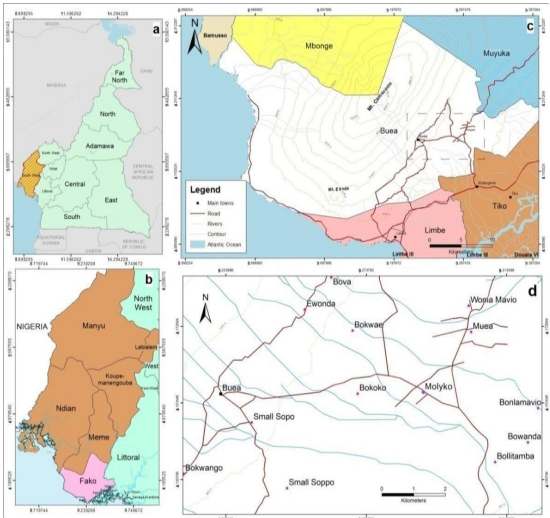
Submission to VIJ 2024-05-14
Keywords
- water scarcity, seasonal variability, climate change, Buea, CAMWATER, rainwater harvesting
Copyright (c) 2024 Roy Lyonga Mbua, Livinus Wirnkar, Sunjo Tata

This work is licensed under a Creative Commons Attribution 4.0 International License.
Abstract
Nowadays water scarcity in developing countries has remained disturbing and creates various impacts especially on the urban areas at best average economic conditions. This seems to be amplified by growing urbanization, climate change and seasonality. Although located in a mountainous area with abundant rainfall received over the years, Buea has been significantly stressed by water scarcity driven by seasonal changes. This study aims at identifying the seasonal variability in water supply and various adaptation mechanisms to water scarcity in Buea. Making use of mixed research design, the study used the systematic random sampling technique. 200 questionnaires were distributed to the sampled populations in the Molyko, Buea Town, Federal Quarters and the Great Soppo neighbourhoods in Buea. Field observations and interviews were used in the study in order to assess the water supply and seasonal variability as well as the various water scarcity adaptations that have been put in place by the sampled population. Linear regression was used to identify variability in the trends of climatic parameters of temperature and rainfall in Buea. The chi-square test was used to verify the assertion that the water scarcity adaptation measures put in place are a function of seasonal variability in Buea. The findings revealed that drilling of boreholes, fetching of water from neighbouring streams and springs in the municipality, rainwater harvesting among others were revealed by this study to be some of the water scarcity adaptations that have been put in place. Results also revealed that the various water scarcity adaptations put in place is not a function of seasonal changes in Buea. Income was seen to be one of the key determinants of the choice as well as the type of water scarcity adaptation put in place. Concerning the challenges faced, the study revealed that limitations to water scarcity adaptions are very significant across the different sampled localities in the Buea. Financial difficulty (32.5%) was the greatest challenge faced poor water development of water supply infrastructure (21%) as well as limited knowledge on water scarcity adaptation were identified.
